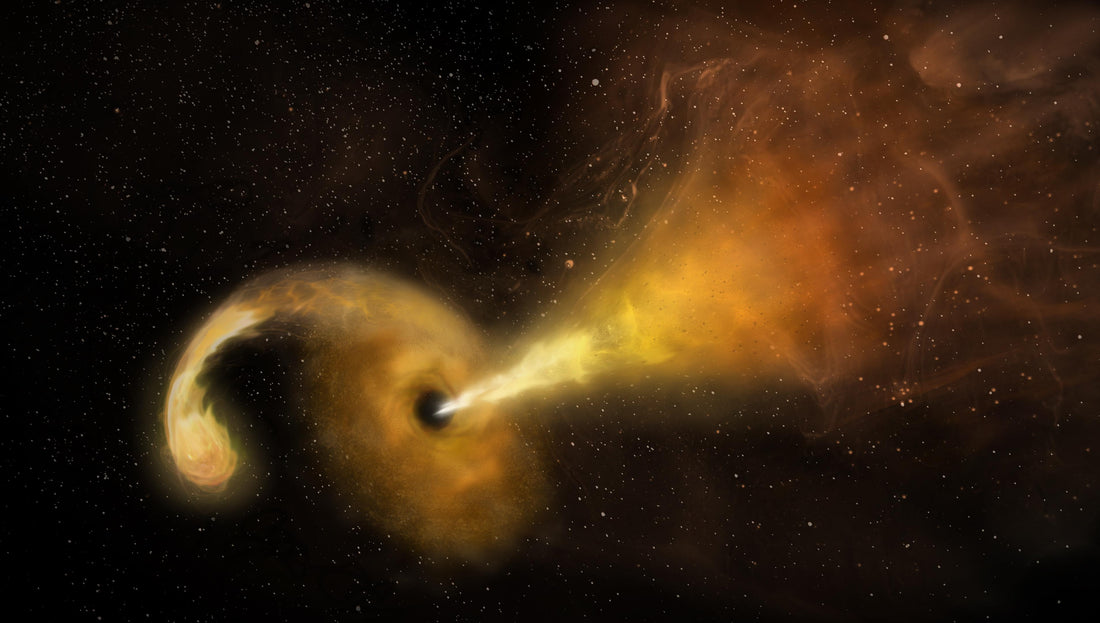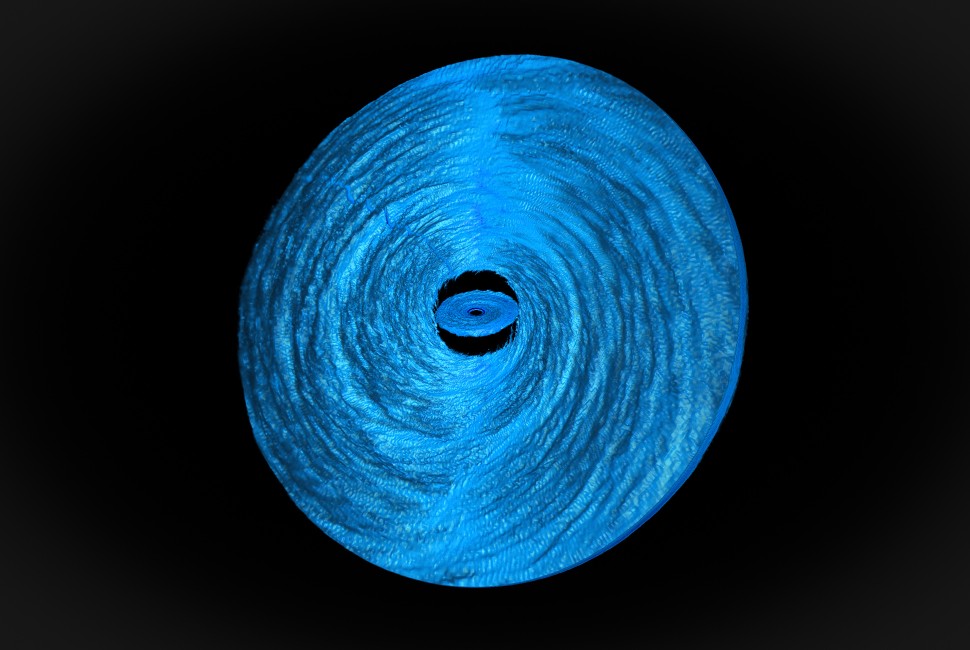
Black holes "eat" things much faster than expected
Share
In a groundbreaking study led by Northwestern University, our understanding of supermassive black holes' eating habits has been dramatically reshaped. While previous theories posited that black holes consumed their celestial banquet slowly, new simulations suggest a very different, voracious reality.
Published on September 20 in The Astrophysical Journal, this research challenges conventional beliefs, offering fresh insights into the insatiable hunger of supermassive black holes.
Traditionally, it was thought that these cosmic behemoths indulged in a leisurely cosmic feast. However, high-resolution 3D simulations reveal a much more frenzied affair. Supermassive black holes, characterised by their rapid spins, induce a cosmic dance in the surrounding space-time. This tumultuous motion tears apart the encircling whirlpool of gas known as an accretion disk, creating inner and outer subdisks.

The twist in the tale, quite literally, is that black holes initially consume the inner subdisk. Subsequently, the remnants of the outer subdisk cascade inwards, replenishing the void left behind by the ravenous black hole. Astonishingly, this cosmic feast repeats itself in a matter of months, a stark contrast to the previously estimated hundreds of years.
The implications of this discovery are far-reaching, offering a potential explanation for the perplexing behaviour of celestial entities like quasars. Quasars, among the brightest objects in our night sky, are known for their erratic and seemingly capricious flares. Classical accretion disk theories, characterised by slow evolution, struggled to elucidate these rapid fluctuations in brightness.
Northwestern's Nick Kaaz, who spearheaded this study, remarked, "Classical accretion disk theory predicts that the disk evolves slowly. But some quasars — which result from black holes eating gas from their accretion disks — appear to drastically change over time scales of months to years. This variation is so drastic. It looks like the inner part of the disk — where most of the light comes from — gets destroyed and then replenished. Classical accretion disk theory cannot explain this drastic variation. But the phenomena we see in our simulations potentially could explain this."

Kaaz, a graduate student in astronomy at Northwestern's Weinberg College of Arts and Sciences, collaborated with Alexander Tchekhovskoy, an associate professor of physics and astronomy and a CIERA member.
It turns out that previous models were based on a flawed assumption: that accretion disks align perfectly with the black hole's rotation. This oversight led to incomplete predictions about the behaviour of these disks. In reality, these disks are far more chaotic and turbulent.
To achieve these groundbreaking results, the researchers employed one of the world's most powerful supercomputers, Summit, located at Oak Ridge National Laboratory. Through a 3D general relativistic magnetohydrodynamics simulation of a tilted accretion disk, they uncovered the intricate dynamics governing these cosmic phenomena.
Black holes, governed by general relativity, exert a profound influence on the space-time surrounding them. Their rotation induces what is known as "frame-dragging," compelling the surrounding space to rotate as well. This effect causes the entire disk to wobble, much like a gyroscope. However, the inner disk experiences a more rapid wobble than its outer counterparts, resulting in collisions that generate bright shocks. These shocks, in turn, drive material towards the black hole.
As the wobbling intensifies, the innermost region of the accretion disk eventually breaks apart from the rest. Consequently, the subdisks begin evolving independently, akin to the wheels of a gyroscope, wobbling at varying speeds and angles.
The point where these subdisks intersect, where the inner and outer subdisks detach, marks the commencement of an astronomical feeding frenzy. Despite friction's efforts to maintain cohesion, the black hole's space-time warping exerts an opposing force, threatening to tear the disk apart. Ultimately, the forces that seek to unravel the disk prevail, propelling material towards the black hole's event horizon.
This groundbreaking research not only offers insights into the eating habits of supermassive black holes but also provides a potential explanation for the enigmatic behaviour of quasars. It challenges classical theories of accretion disk evolution, shedding new light on the dynamic and turbulent nature of these cosmic phenomena.
Kaaz aptly summarises the significance of this discovery: "How gas gets to a black hole to feed it is the central question in accretion-disk physics. If you know how that happens, it will tell you how long the disk lasts, how bright it is, and what the light should look like when we observe it with telescopes." This research opens a new chapter in our quest to comprehend the enigmatic and awe-inspiring cosmos.
You’ve come this far…
Why not venture a little further into A.S.S. - our exclusive Australian Space Society.
And keep thrusting Australia into the deep unknown…
#Space_Aus




